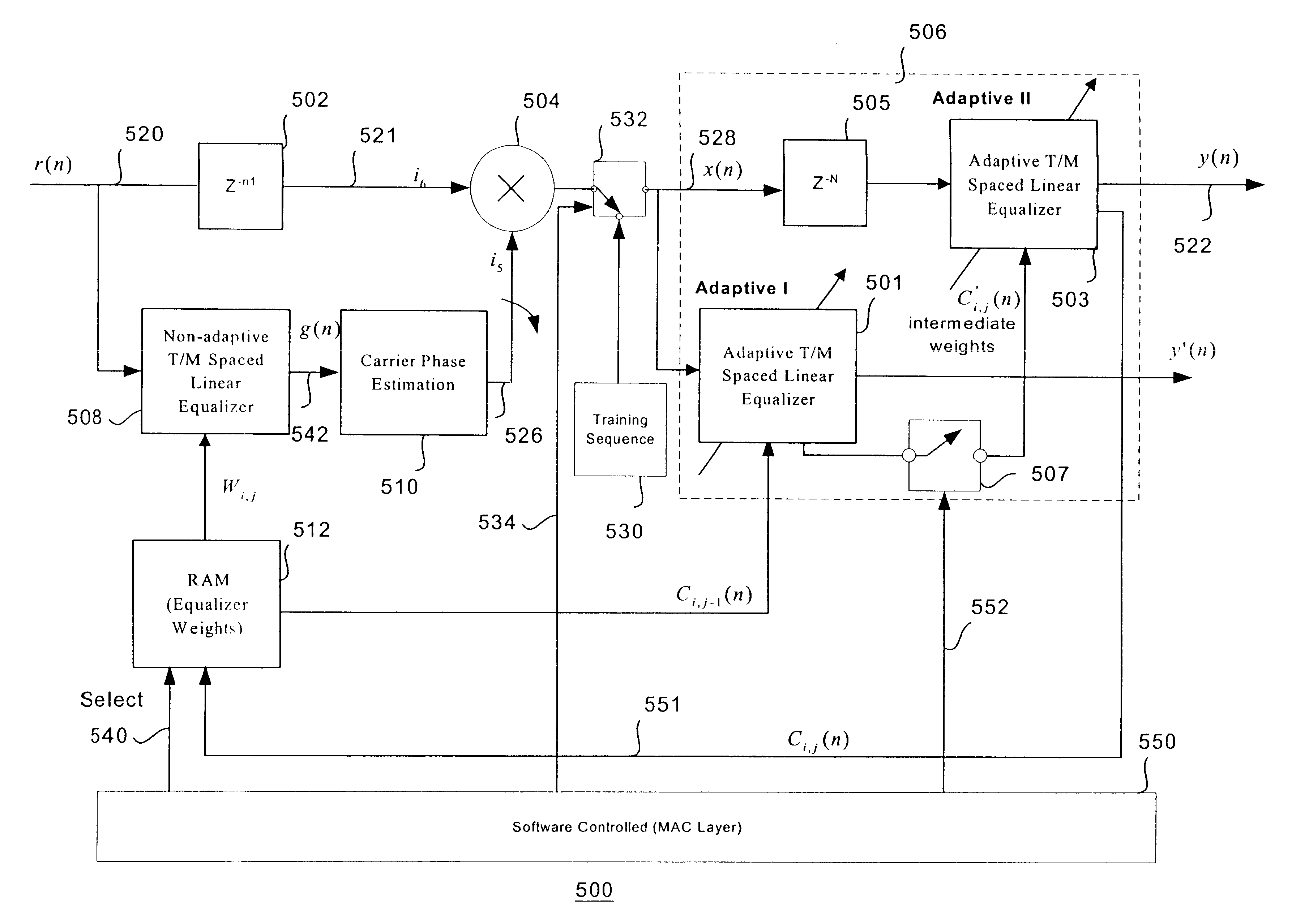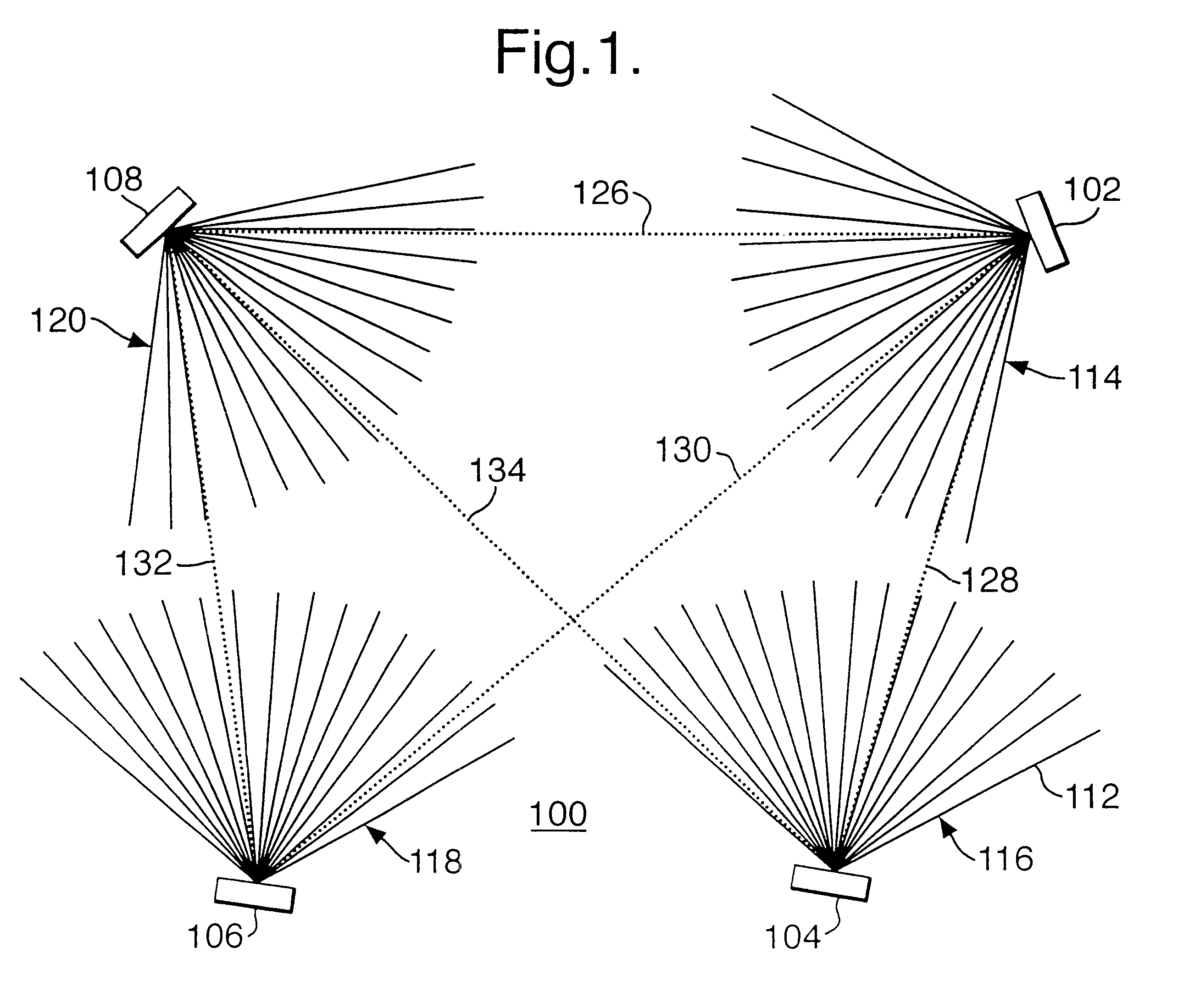Adaptive equalizer system for short burst modems and link hopping radio networks
a technology of short burst modems and equalizer systems, applied in the field of adaptive equalizer systems, can solve the problems of best possible bit error performance, inadequacies in the application of short burst transmission, and the reduction of the transmission efficiency of known data sequences
- Summary
- Abstract
- Description
- Claims
- Application Information
AI Technical Summary
Benefits of technology
Problems solved by technology
Method used
Image
Examples
Embodiment Construction
A method for an adaptive equalizer apparatus in a multiple-link hopping wireless system includes hopping among a plurality of radio links to receive short bursts and equalizing amplitude and delay distortion for each radio link from a received burst on the radio link. The adaptive equalizer method and apparatus use multi-stage equalization techniques consisting of a fixed equalizer and two adaptive equalizers to compensate for the amplitude and phase impairment of each individual link of the available multiple links independently on a burst-per-burst basis. Since the adaptive equalizer performance is highly dependent on the channel behavior of the particular link, a means is provided to pre-compensate coarsely the undesired channel characteristic and to remove the carrier phase offset of the received burst of each link independently prior to any adaptive equalization processing schemes. For each radio link of a plurality of multiple hopping links, the tap-coefficient values of an ad...
PUM
 Login to View More
Login to View More Abstract
Description
Claims
Application Information
 Login to View More
Login to View More - R&D
- Intellectual Property
- Life Sciences
- Materials
- Tech Scout
- Unparalleled Data Quality
- Higher Quality Content
- 60% Fewer Hallucinations
Browse by: Latest US Patents, China's latest patents, Technical Efficacy Thesaurus, Application Domain, Technology Topic, Popular Technical Reports.
© 2025 PatSnap. All rights reserved.Legal|Privacy policy|Modern Slavery Act Transparency Statement|Sitemap|About US| Contact US: help@patsnap.com



